Ho’okipa Beach, on Maui’s north shore, is an incredibly popular beach. Located just passed Paia on Hana Highway, its large waves and strong winds have made this beach a premier spot for windsurfing. So much so that it hosts multiple sporting competitions, including the annual Aloha Classic.
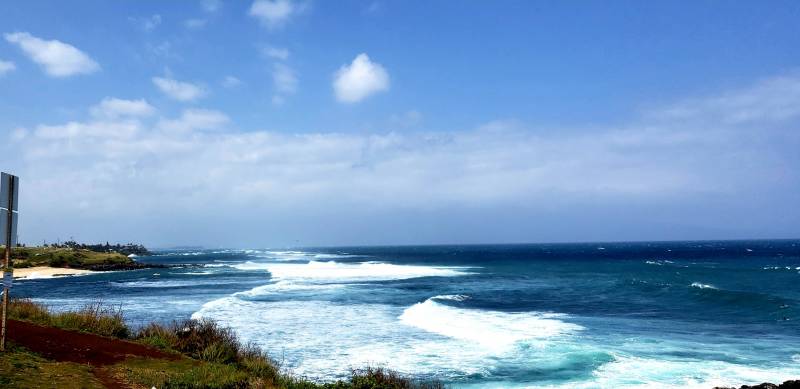
Winter waves at Ho’okipa Beach
Wildlife at Ho’okipa Beach
Although Ho’okipa is internationally known for windsurfing, it’s not just a mecca for humans but for Maui’s wildlife as well. On a recent trip to this beach, I was treated to the company of a monk seal and to dozens of green sea turtles. The honu, as the green sea turtles are called in Hawaiian can be regularly spotted on the east side of the beach. The Hawaiian monk seal? Not so much.
Hawaiian Monk Seal
Ilio holo I ka uaua is the name the Hawaiians have given to the monk seal found in these waters. It means “dog that runs in rough water.” As one of only two endemic mammals found in Hawaii, the monk seal is on the endangered species list so seeing one up close and in person is a special treat.
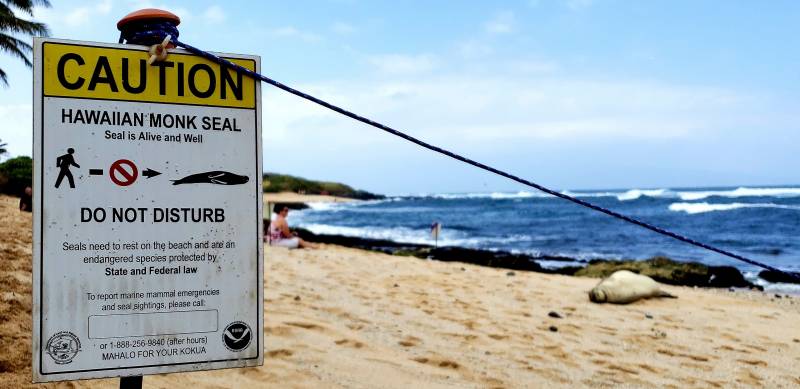
Hawaiian monk seal soaking up some rays
You gotta love the sign wordage; “Seal is Alive and Well.” It’s true, if you don’t know, it could pass for a bloating carcass! Just kidding! A monk seal will typically bask motionless on the beach, in the sun for hours at a time. They may lazily scratch an itch with a front flipper without even opening their eyes. Or they may raise their head and give stink-eye to the most recent person who has woken them up with a squeal of delight upon discovering their presence.
Caution signs and ropes are erected to give the seal plenty of room.
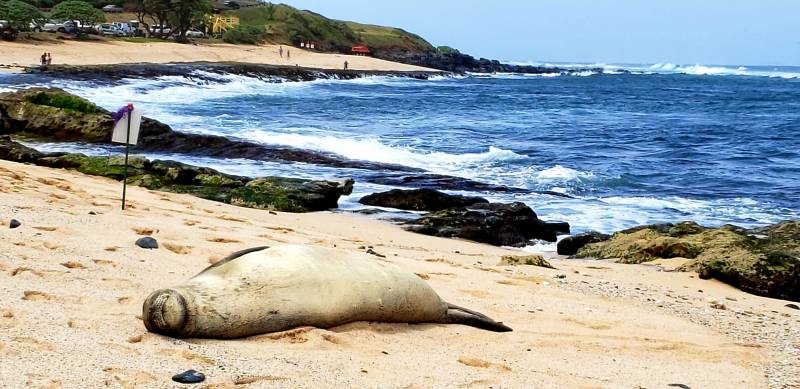
A Hawaiian monk seal enjoying the beach
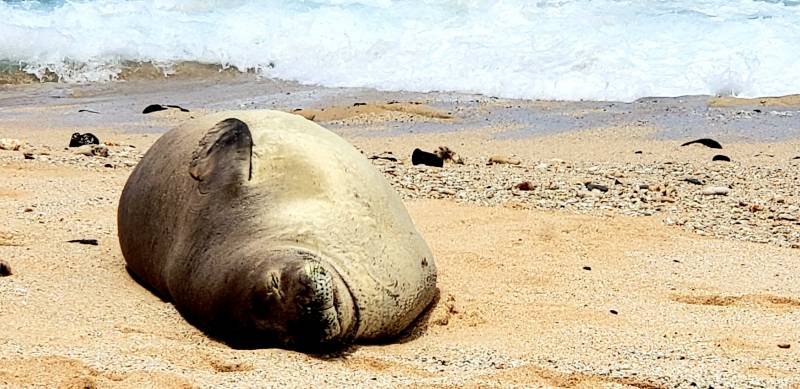
Happily snoozing
Green Sea Turtles
Meanwhile, on the other side of the beach, a large group of honu known as a bale has come ashore to bask one by one. Researchers still don’t know why green sea turtles beach themselves. Is it to avoid predators? Is it part of their socialization? Or could it be to thermoregulate? Regardless of the reason, honu sure are a sight to behold.
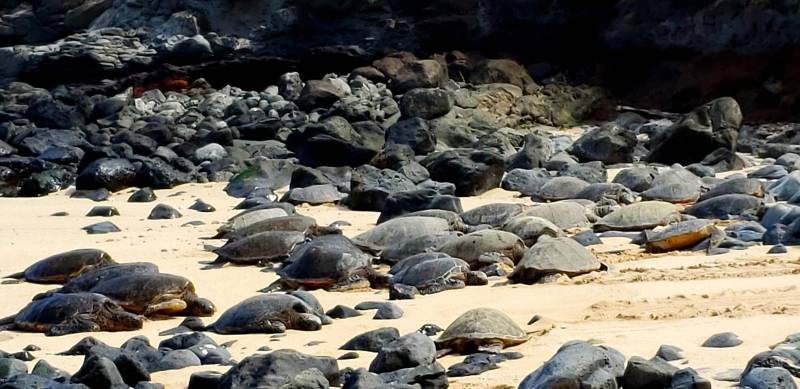
How many honu do you see on the beach?
As you can see, the honu are almost completely camouflaged amidst the lava rock boulders on the beach. Any ideas as to how many green sea turtles there are in the picture? (The answer is at the end of the blog.) For that matter, why do they call them green sea turtles, anyway? They sure don’t look green to me! Turns out they’re called green sea turtles due to their green body fat. The green seaweed that they eat is what causes this pigmentation. This may seem morbid but back in the 1960s, these reptiles were a food source. Thankfully times have changed, due in part to one researcher who has dedicated his life to Hawaii’s green sea turtles. His name is George Balazs. For an interview with Mr. Balazs on how Hawaiian turtle conservation has changed over the decades, check out the article: A Look Back: Scientist Dedicates Career to Sea Turtles in Hawaii.
The status of the green sea turtle can be confusing. The way I understand it is that green sea turtles are listed as endangered worldwide, according to the International Union for the Conservation of Nature. Yet honu are listed as threatened by the State of Hawaii, although this status wasn’t enforced until 1978.

Please give sea turtles plenty of room both in and out of the water
For more information about Maui’s wildlife and to see how you can help please check out the Hawaii Wildlife Fund.
Please feel free to contact me, Harry “Dev” Devery, regarding any Maui real estate questions.
Answer: How Many Honu are in this Picture?
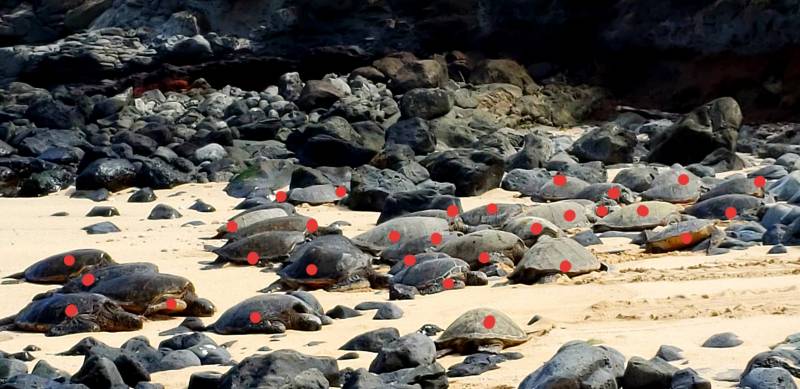
I counted 30 green sea turtles

Leave your opinion here. Please be nice. Your Email address will be kept private, this form is secure and we never spam you.